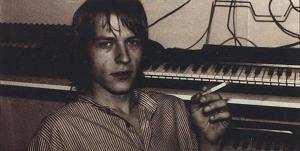This interview was conducted with Ben after we exchanged messages over the years but I never got around to putting it online – in light of his recent passing I thought I would post it here.
Hi,
Hi Ben! Some questions as mentioned on Facebook messenger 🙂 Also Happy Birthday!
Thanks. Indeed, they are a bit more original… 🙂
- You started your career from W.E.M.U.S.I.C. along with Antony Crowther and made some “demo” disks. Where and how did you distribute them?
I seem to recall we sent them round a few of software houses, put them on Compunet and maybe a few other bulletin boards, and then handed them out at a couple of shows in London, and to anyone else who’d listen! - I think Rob Hubbard’s timbres were mainly inspired from synth-related music, while yours were perhaps based on real instruments and you more valued the “groove”. For example, the electric guitar in Blood Brothers is amazing! Would you say this is true of your approach to composing for SID at the time?
Completely – I’ve always been a bit of a rocker, and I like my “real” instruments, so I was quite often thinking in terms of a “traditional” guitar group. - You have covered La Femme Chinoise by YMO: http://csdb.dk/release/?id=37556 …
Did you like their music? And were they popular in UK at that time?
They weren’t really that well known in the UK I think. I was introduced to them by Tony, and when I needed to pull an “oriental” tune out of the bag, they were perfect for ripping off…but the less said about that, the better 🙂 - Do you think some features of the SID chip enabled more experimentation and discovery than other systems at the time?
Of course. All the other chips at the time just had the usual waveforms and volume envelopes – the SID had filters’n’ring-mod’n’shit – not really reliable, due to the need to keep them cheap, but still lovely to play with.
Do you have fond memories of composing for the SID? Feel free to wax lyrical with trivia or anecdotes from that era 🙂
The fondest memory probably is the creation of the original WE MUSIC disk. That was a period (I forget exactly how long – a few weeks or something) where I’d go round to Tony’s house every night, and from about 10pm to 6am we just played – I’d be writing a tunes with Tony acting as “producer” – we’d discuss possible improvements to a piece, Tony would do 1/2 hour coding and come up with a new effect or control method for the player, which I’d then incorporate back into tune, and the whole thing evolved. It was a marvellous time of discovery, fuelled by instant coffee, cigarettes and thousand-island-dressing sandwiches.
- How much camaraderie existed between the big names back in the mid 1980’s with regards to SID composing? I know you had a friendship with Tony Crowther (obviously) and David Whittaker, but was there much crosstalk in terms of other composers – or was it mostly a passive acknowledgement of each other’s work via hearing their latest creations in games as they were released?
More the latter really. We met up with Rob a few times, mainly at shows or down at the offices of Zzap, but we were all geographically scattered (although, now I come to think of it, all “oop north”), and Dave was the only one with a flash car!
- What music routine did you use for the SID and do you think it was essential back then to have coding prowess to even be able to construct or translate musical ideas properly into fruition?
Tony wrote it from scratch, with a view to my being able to type in notes, numbers and commands into a text editor.
I think so, yes. Although I didn’t write the SID player myself (although I wrote subsequent ones), I still needed to understand how it all worked, from fundamentals of controlling the chip, through to the “programming” of the music and effects – structuring and looping data sections in order to make it all fit into 4K or whatever.
Was the infamous ‘hard restart’ bug known to composers back then? (i.e. http://csdb.dk/forums/?roomid=14&topicid=27340)
Can’t say I ever came across that, no.
- How do you view game music in its current state? (i.e full orchestration and grandoise production values).
The same way I view anything when big bucks start coming in, I’m afraid, from rock to football. The “quality” improves, but it seems to lose its heart. - Do you think the /Old Grey Whistle/ test is still a valid rule to apply or do you think people are too easily wowed by big overbearing orchestral walls of sound to absorb memorable theme-tunes and or distinctive melodies?
Again, I think the latter. It’s very easy to make a mediocre melody sound great when it’s blasted out by a big brass section backed by lush strings, or produce some “dark” atmosphere with the same old minor chord sequences. The textural limitations of the older chips, along with the limitations of memory etc. meant that we couldn’t rely on timbre and structure alone to make a piece sound good – there had to be something there that you could bear to listen to over and over again.
Cheers,
Ben
